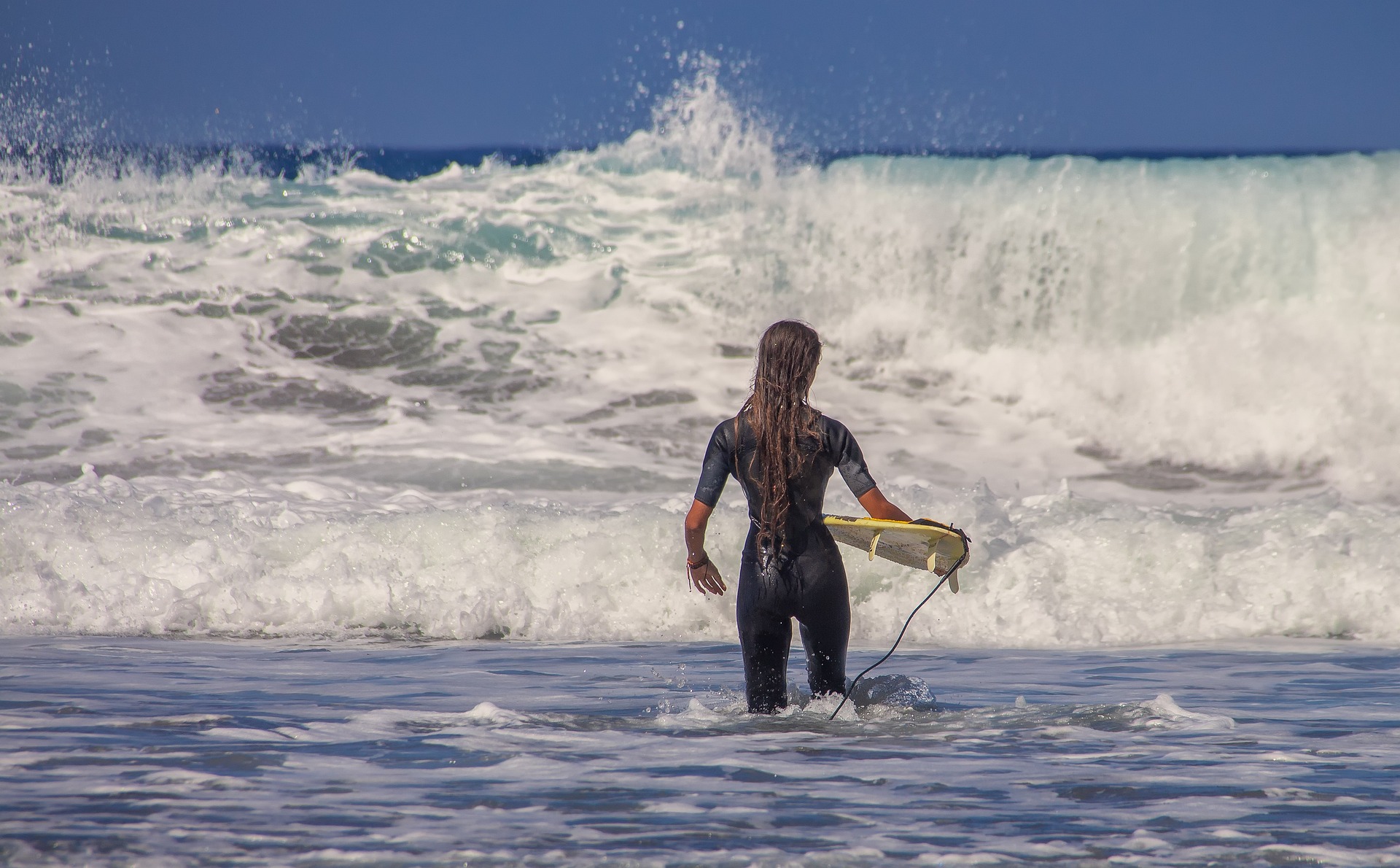Adaptive Surfing: Riding Waves Beyond Boundaries
Surfing has long been synonymous with freedom, adventure, and the raw power of nature. But for many individuals with physical disabilities, the thrill of catching a wave seemed out of reach. Enter adaptive surfing, a revolutionary movement that's transforming lives and challenging perceptions. This article delves into the world of adaptive surfing, exploring its origins, impact, and the incredible athletes pushing the boundaries of what's possible on the water.
The Birth of Adaptive Surfing
Adaptive surfing traces its roots back to the 1940s when injured World War II veterans found solace and rehabilitation in the waves of California. However, it wasn’t until the early 2000s that the movement gained significant momentum. Pioneers like Jesse Billauer, who became quadriplegic after a surfing accident, paved the way for others by demonstrating that surfing was still possible with the right adaptations and support.
Organizations like Life Rolls On and the Challenged Athletes Foundation began hosting surf clinics and competitions, providing specialized equipment and training. These early efforts laid the groundwork for what would become a global phenomenon, attracting participants from all walks of life and with various disabilities.
Technological Innovations in Adaptive Surfing
As the adaptive surfing community grew, so did the need for specialized equipment. Surfboard shapers and engineers collaborated with athletes to design boards tailored to different abilities. For example, surfers with lower limb amputations might use boards with special knee pads or prosthetic attachments, while those with limited upper body strength might benefit from boards with handles or additional buoyancy.
One of the most significant innovations has been the development of wave-riding wheelchairs. These waterproof chairs allow individuals to transition seamlessly from beach to surf, maintaining independence throughout the entire surfing experience. Companies like Mobi-Chair have revolutionized beach accessibility, making it possible for more people to enjoy the ocean.
Competitive Adaptive Surfing
The growth of adaptive surfing has led to the establishment of competitive events worldwide. The International Surfing Association (ISA) World Adaptive Surfing Championship, first held in 2015, has become the premier event in the sport. This annual competition brings together athletes from dozens of countries, showcasing incredible talent and pushing the boundaries of what’s possible in adaptive surfing.
Competitive adaptive surfing is divided into several classifications based on the type and severity of disability. These include prone, sit, stand, and visually impaired divisions. Each category presents unique challenges and requires specific skills, making for an exciting and diverse competitive landscape.
The Therapeutic Benefits of Adaptive Surfing
Beyond the thrill of competition, adaptive surfing offers profound therapeutic benefits. For many participants, the sport provides a sense of freedom and independence that may be lacking in other aspects of their lives. The physical demands of surfing contribute to improved strength, balance, and cardiovascular health, while the meditative aspects of being in the ocean can have significant mental health benefits.
Studies have shown that adaptive surfing can help reduce symptoms of PTSD, depression, and anxiety. The combination of physical activity, connection with nature, and social interaction creates a powerful therapeutic cocktail. Many adaptive surfers report increased self-confidence and a more positive outlook on life after taking up the sport.
Breaking Barriers and Changing Perceptions
One of the most significant impacts of adaptive surfing has been its role in changing societal perceptions of disability. By showcasing the incredible abilities of adaptive athletes, the sport challenges stereotypes and promotes inclusivity. Beaches and surf breaks that were once inaccessible are now being modified to accommodate all surfers, regardless of physical ability.
This shift in perception extends beyond the surfing community. Adaptive surfing has inspired similar movements in other sports and activities, encouraging a more inclusive approach to recreation and competition. The visibility of adaptive athletes in media and popular culture has also helped to normalize disability and promote understanding.
The Future of Adaptive Surfing
As adaptive surfing continues to grow, its future looks bright. Technological advancements promise even more innovative equipment and techniques, potentially opening up the sport to individuals with an even wider range of disabilities. There’s also a push for greater recognition on the global stage, with many advocates hoping to see adaptive surfing included in future Paralympic Games.
Education and outreach remain crucial to the sport’s development. Many adaptive surfing organizations are focusing on training instructors and lifeguards in adaptive techniques, ensuring safe and enjoyable experiences for all participants. There’s also an emphasis on making surf spots more accessible, with initiatives to install beach mats, ramps, and adaptive equipment at popular locations worldwide.
The Global Impact of Adaptive Surfing
Adaptive surfing’s influence extends far beyond the beach. The sport has become a powerful tool for social change, promoting disability rights and accessibility in communities around the world. In developing countries, where resources for individuals with disabilities may be limited, adaptive surfing programs are providing new opportunities for recreation, rehabilitation, and social connection.
International collaborations are also on the rise, with adaptive surfing organizations sharing knowledge and resources across borders. These partnerships are helping to standardize practices, improve safety, and expand access to the sport in regions where it’s still in its infancy.
Challenges and Opportunities in Adaptive Surfing
Despite its growth, adaptive surfing faces several challenges. Funding remains a significant issue, with many athletes struggling to afford specialized equipment and travel to competitions. There’s also a need for more accessible beaches and surf spots, particularly in areas with limited resources or challenging terrain.
However, these challenges also present opportunities for innovation and community involvement. Crowdfunding campaigns, corporate sponsorships, and government initiatives are all playing a role in supporting adaptive surfing. Local communities are also stepping up, with volunteer programs and beach clean-ups focused on improving accessibility for all beachgoers.
The Role of Technology in Advancing Adaptive Surfing
As technology continues to evolve, its impact on adaptive surfing is becoming increasingly significant. Virtual reality (VR) and augmented reality (AR) are being explored as tools for training and rehabilitation, allowing surfers to practice techniques and build confidence in a controlled environment before hitting the waves.
3D printing is revolutionizing the production of custom prosthetics and adaptive equipment, making it possible to create highly personalized solutions for individual surfers. This technology is particularly valuable in remote areas where access to specialized gear may be limited.
Adaptive Surfing and Environmental Conservation
The adaptive surfing community has become a powerful voice in ocean conservation efforts. Many adaptive surfers, having experienced the healing power of the ocean firsthand, are passionate advocates for protecting marine ecosystems. This has led to partnerships between adaptive surfing organizations and environmental groups, focusing on issues like plastic pollution, coral reef protection, and sustainable coastal development.
These initiatives not only benefit the environment but also help to ensure that future generations of surfers, adaptive or otherwise, will have clean, healthy oceans to enjoy. The adaptive surfing community’s commitment to conservation serves as an inspiring example of how sports can be a catalyst for positive environmental change.
Riding the Wave of Inclusion
Adaptive surfing represents more than just a sport; it’s a movement that embodies the human spirit’s resilience and the power of inclusivity. By breaking down barriers and challenging preconceptions, adaptive surfing is not only transforming lives but also reshaping our understanding of ability and potential.
As we look to the future, the ripple effects of adaptive surfing will continue to be felt far beyond the shoreline. It serves as a powerful reminder that with creativity, determination, and support, there are no limits to what can be achieved. The ocean, with its boundless energy and healing properties, truly can be a place for everyone to find freedom, joy, and connection.






